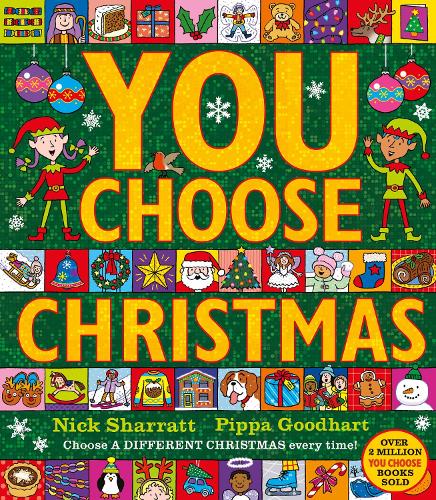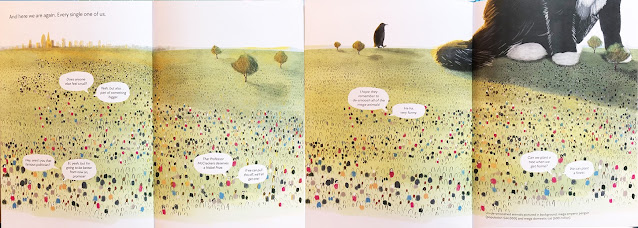After thirteen years of being a regular contributor to this lovely Picture Book Den, I've decided that this will be my last regular post here. What should my last post be? It's landing at Christmas, so I give you a gift of a story about giving. It's a story intended for a picture book, but which has yet to find a publisher who wants it. I hope you enjoy it -
What Can I Give?
One morning my phone goes - Bleep-bleepety-bleep!
It’s Mole.
‘Hello, Moley, how are you?’
Mole just sighs and says nothing.
‘Shall I come and see you?’ I ask.
‘Yes please, Rabbit,’ says Mole.
‘I’ll bring you a present to cheer you up,’ I tell her.
But I haven’t got a present. What can I give her?
I think of Mole in her gloomy dark hole.
I want to give Mole colours!
So I stitch-stitch a quilt to wrap-hug Mole up in sky blue, leaf green, berry red.
‘I think she’ll like this!’
But, as I set off to Mole’s hole home, I see Badger, and Badger is shivery-quivery cold.
What shall I do?
What would you do?
I give the quilt to poor cold Badger.
‘Thank you, kind Rabbit,’ says Badger.
I’m glad that Badger’s warm, but now what can I give sad Mole?
Perhaps I can give her some fun.
So, I make a toy for Mole.
I make a fine little boat to float in Mole’s bath; a boat for her to play with.
I know that she’s waiting for me, so I must hurry to take it to her.
But, as I scurry along the path, I see Mouse. Poor little Mouse is gulp-sniff-sobbing.
‘Oh dear, Mouse, what’s the matter?’
‘I got left behind,’ sniffs Mouse. ‘And now I can’t catch up with my friends, and it’s getting late, and I don’t know what to do-oo-oo! Boo hoo!’
‘Oh.’ I look at the little boat I’d made for Mole.
What shall I do? What would you do?
‘Would a boat that could float you down the river help?’ I ask.
‘Oh, yes please, kind Rabbit!’ says Mouse.
So, Mouse floats away in the boat to catch up with his friends.
But now what can I give Mole?
I haven’t got time to go home and make anything new. All I can do is to collect pretty things as I go along the path. So, I make a bouquet of twigs and leaves and berries to bring beauty into Moley’s home.
But just as I am about to knock on Mole’s door, I see Hare, bounding along the path.
She sees my bouquet, and she says, ‘Oh, my goodness gracious me, is that big bouquet all for me? How did you know it was my birthday today? Hooray! Thank you so much, kind Rabbit!’
So, of course, I give Hare the bouquet.
And now I have nothing to give to my friend Mole, nothing at all. But I’d promised to give her a present! Shall I just creep away, and come back again another day?
What would you do?
Uh-oh, oh no, Mole has seen me!
‘Come in!’ calls Mole.
So that’s what I do.
I tell Mole about trying to bring her colours, making a quilt, and meeting a shivery Badger. I tell about trying to bring her fun, with the boat that was needed by lost little Mouse. I tell about the bouquet that made Hare birthday-happy.
‘So, I’m sorry, dear Mole, but I have nothing to give you after all. Nothing. Nothing, at all.’
‘That’s not true!’ laughs Mole. ‘You have brought me a story full of lovely things. I love stories.’
That gives me an idea. ‘Shall we make the story into a book?’
So, together, Moley and I make the story into a book.
‘The perfect present!’ smiles Mole. ‘Thank you, kind Rabbit.’
And her smile is the perfect present for me.
My hope was that this, as a book, could look as if its hand-written, and could perhaps include what look like scrapbook additions of scraps of quilt fabric and winter flowers etc, thus appearing to be the book they make at the end of the story.
Pippa Goodhart
Wishing you all a very happy Christmas!
PS My You Choose Christmas, beautifully illustrated by Nick Sharratt, is newly out in paperback:
 A
A






















































